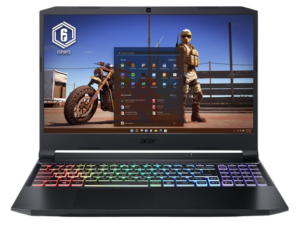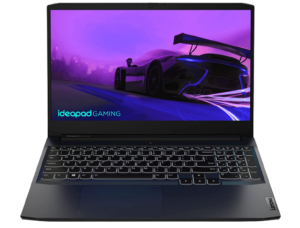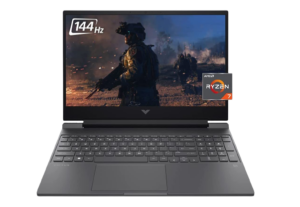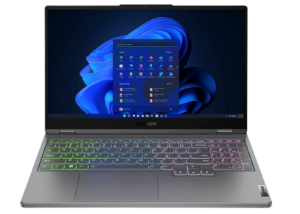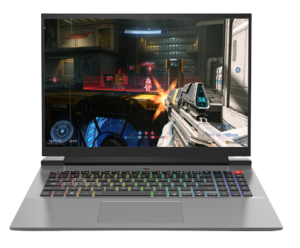If you're thinking about buying a new gaming laptop, read this first.
Here’s how I picked out my next gaming laptop
I just bought my first gaming laptop in over a decade. Here’s the low down on what I bought, how I decided on it and what some of the runner-up options looked like.
Over the past few years, I’ve reviewed gaming laptops of all shapes and sizes. I’ve written about portable powerhouses built by every brand from ASUS to Razer. I’ve weighed in on 16-inch desktop replacements and 13-inch ultraportables. To my surprise, the gaming laptop I ultimately ended up pulling the trigger on came from a manufacturer that I usually don’t rate all that highly.
What I picked: Acer Nitro 5
During this year’s Black Friday sales, I picked up the Acer Nitro 5.
I got the model with an Intel Core i9-11900H processor, 16GB of DDR4 RAM, an Nvidia RTX 3060 graphic card, 512GB of SSD storage and a QHD resolution screen clocked at 165Hz. I very almost bought it through Bing Lee for $1899, but then looked around and found a better deal on it through Centre Com.
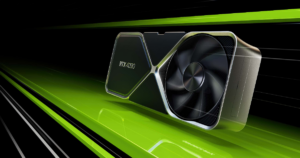
Nvidia RTX 40 vs RTX 30 vs RTX 20 series side-by-side showdown
One GPU to rule them all.
How I decided
While I’ve plenty of nostalgia for the Predator gaming rigs of the mid-2000s, I can’t really say that much of what Acer has recently put into the market has done all that much for me. With the exception of its nifty Concept D line, most of what the brand has put out has seemed, to put it kindly, forgettable and generic.
To be clear, this sentiment isn’t even necessarily a knock on Acer. I’ve been following the world of gaming laptops long enough to know that standing out in a category where most of the players tend to be building similar products with the same parts is really difficult.
It’s a testament to what the likes of Alienware and ROG have done with the formula that they can manage to overcome this tendency towards similarity. Unfortunately, not every gaming laptop maker rises to this level. Most don’t, and more often than not I’ve found that Acer falls into that bucket.
Fortunately, as I set out on my journey into the world of buying gaming laptops, I found myself less and less caught up on the things that make more exceptional gaming laptops shine.
If it came down to it, a thin and light form factor or a bespoke design would be nicer than the alternative. However, when I think about the ways in which I’m expecting to use my laptop, those strengths don’t count for as much as they would otherwise.
Coming off using an Intel Hades Canyon NUC as my main PC for several years and a work-issued MacBook Pro as its replacement once it broke, I knew that I could probably approach my next gaming laptop with the expectation that I’d probably be using it at my desk most of the time.
While the 15.6-inch QHD screen found on the Nitro 5 is pretty respectable, courtesy of the 165Hz refresh rate, I wouldn’t have been all that bothered if it was only 1080p. For most of the gaming I plan to do on this thing, it’s probably going to be plugged into a monitor.
Likewise, since my mouse, keyboard and headphones can be handled by the connected dock, the fact that the Nitro 5 only has a single USB Type-C port alongside a trio of USB Type-A ports isn’t nearly as much of a constraint as it might be.
In the stricter and vacuum-like context of a review, these limitations are much harder to forgive than they are in reality. It’s much the same story when it comes to factors like battery life.
For longer play sessions, I’m expecting to use the Nitro 5 at a desk with a power supply connected to it. Having the extra bit of portability in a pinch that a bigger battery would provide might be nice, but it’s not a necessity that it makes sense for me to pay extra for.
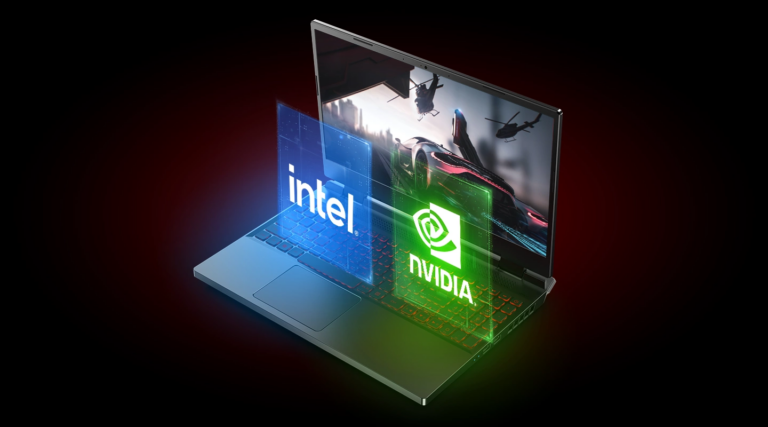
All that said, the detail that really did push me over the line here was the specs. Wading into the world of gaming laptops for the first time in over a decade, I was itching to find something powered by AMD’s Ryzen processors, but snagging last generation’s overkill Intel chipset is a more than worthy alternative.
Likewise, when it came to the graphics involved I know that I’m always happy to compromise on fidelity if it means a smoother frame rate. More often than not, I end up playing most games in 1080p. While I do like to dabble with more demanding titles like Cyberpunk 2077 from time to time, most of the best games I end up playing on my PC are either a few years old, an indie game or a multiplayer-oriented title with more modest requirements like Overwatch 2 or Valorant.
The Nvidia GeForce RTX 3060 inside the Acer Nitro 5 isn’t going to last me forever, but it’s probably going to last me long enough for the price I’m paying. A GeForce GTX 1650 might skirt on the side of not quite powerful enough and graduating to something like a 3070 would probably mean paying more than I wanted to.
In the past, I've knocked points off laptops and smartphones for not having enough storage or RAM, and it's true that what the Nitro 5 offers in both departments is a little less than satisfying. However, as opposed to the video card or CPU, upgrading either later down the line is a very real possibility.
I do regret that I couldn't manage to find a gaming laptop that was one generation of silicon closer to the cutting edge, but I don't regret prioritising the details that can't be worked around or upgraded later down the line over the things that can.
Even if you don't end up buying the same Acer-branded machine I did, that's someone that anyone in the market for a new gaming laptop may want to consider.
Related Articles





